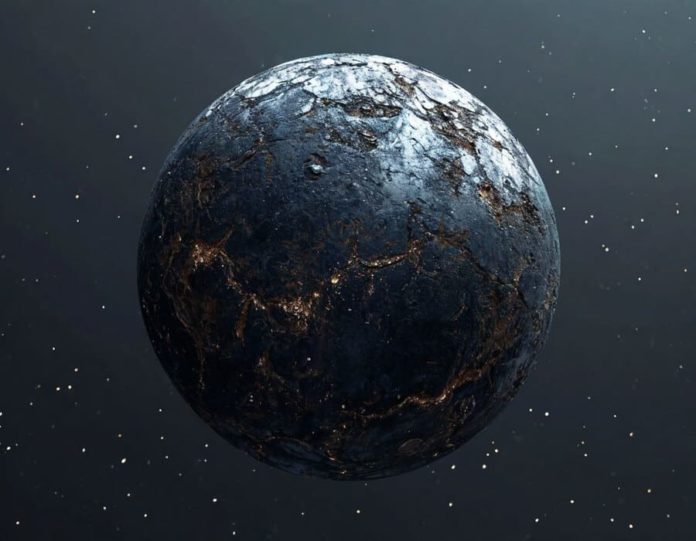Dark matter is one of the most fascinating mysteries in modern physics. Although it doesn’t emit, absorb, or reflect light, scientists believe it makes up about 85% of the matter in the universe. Its existence is inferred from the gravitational effects it has on visible matter, but we still don’t know exactly what dark matter is made of. Over the years, many experiments and theories have tried to uncover the nature of dark matter, and recent advances are bringing us closer to an answer.
What is Dark Matter?
In the 1930s, astronomers noticed that galaxies were rotating in a way that didn’t make sense based on the visible matter they contained. The stars in the outer regions of galaxies were moving faster than they should have been if only the visible matter was exerting gravitational force. This led to the hypothesis that there was some unseen matter providing extra gravitational pull – dark matter.
While we don’t know exactly what dark matter is made of, scientists have proposed several theories. The leading candidate is a particle called a Weakly Interacting Massive Particle (WIMP), which would only interact with normal matter via gravity and the weak nuclear force. Other theories suggest axions, ultra-light particles that could explain dark matter’s mysterious properties, or even the possibility of primordial black holes.
Recent experiments searching for Dark Matter
LUX-ZEPLIN (LZ) Experiment
One of the most sensitive experiments to detect dark matter is the LUX-ZEPLIN (LZ) detector, located deep underground in South Dakota, USA. This detector is designed to find WIMPs by observing their interactions with xenon atoms. Although LZ hasn’t yet found any evidence of WIMPs, it has ruled out certain mass ranges, narrowing the search for dark matter particles.
Xenon1T Experiment
Another experiment, XENON1T, based in Italy, also uses liquid xenon to detect potential interactions between dark matter and normal matter. Like LZ, it has so far found no conclusive evidence of dark matter but has set even tighter constraints on the properties of WIMPs.
CERN’s Large Hadron Collider (LHC)
The Large Hadron Collider (LHC), the world’s largest particle accelerator, has also been searching for signs of dark matter. By smashing protons together at extremely high speeds, scientists hope to create dark matter particles. So far, no direct evidence has been found, but experiments at the LHC continue to provide important insights into particle physics, helping to rule out or support various dark matter models.
Theories of Dark Matter
Supersymmetry
One of the most popular theories related to dark matter is supersymmetry, which suggests that every known particle has a “superpartner” with a different mass. These superpartners could potentially be the particles that make up dark matter. Although no evidence of supersymmetric particles has been found, ongoing experiments at the LHC are still investigating this possibility.
Modified gravity theories
Some scientists suggest that dark matter doesn’t exist at all. Instead, they propose that our understanding of gravity needs to be modified. The most well-known of these theories is MOND (Modified Newtonian Dynamics), which suggests that gravity works differently on large cosmic scales, possibly eliminating the need for dark matter. However, MOND struggles to explain certain observations, such as the cosmic microwave background radiation.
Dark Matter as a new type of particle
Other researchers are exploring the idea that dark matter could be something entirely different from WIMPs or axions. This includes the concept of sterile neutrinos, particles that don’t interact with normal matter via any of the known forces except gravity. These elusive particles could be a form of dark matter, but finding them would require extremely sensitive detectors.
Challenges in detecting Dark Matter
Weak interactions
One of the biggest challenges in detecting dark matter is that it interacts so weakly with normal matter. This means that even if dark matter particles are passing through the Earth right now, they would barely leave a trace. That’s why experiments are often placed deep underground or in highly controlled environments to minimize interference from cosmic rays or other background noise.
The elusive nature of Dark Matter
Despite decades of research and increasingly sophisticated detectors, dark matter remains elusive. This has led some to question whether we’re looking for the right thing. Could dark matter be made of something even stranger than we’ve imagined? Or is it possible that we’ve misunderstood its fundamental nature?
The future of Dark Matter research
Upcoming experiments
There are several exciting new experiments on the horizon that may finally reveal the secrets of dark matter. The Axion Dark Matter Experiment (ADMX) is looking for axions, while the Deep Underground Neutrino Experiment (DUNE) will explore the possibility of sterile neutrinos. Additionally, next-generation detectors like LUX-ZEPLIN’s successor and improved particle accelerators will continue the search for WIMPs and other potential dark matter candidates.
Collaboration between Astronomy and particle physics
The search for dark matter has brought together experts from multiple fields, including astronomy and particle physics. By combining observations of galaxies, cosmic phenomena, and particle interactions, scientists are developing a more comprehensive picture of how dark matter behaves and how we might finally detect it.
The search for dark matter is one of the most exciting areas of modern physics. While we have yet to directly detect it, recent experiments and theories have narrowed the possibilities and brought us closer to understanding this mysterious substance. Whether it’s through the detection of WIMPs, axions, or a new kind of particle altogether, unlocking the secret of dark matter will revolutionize our understanding of the universe and may lead to the discovery of entirely new physics.













